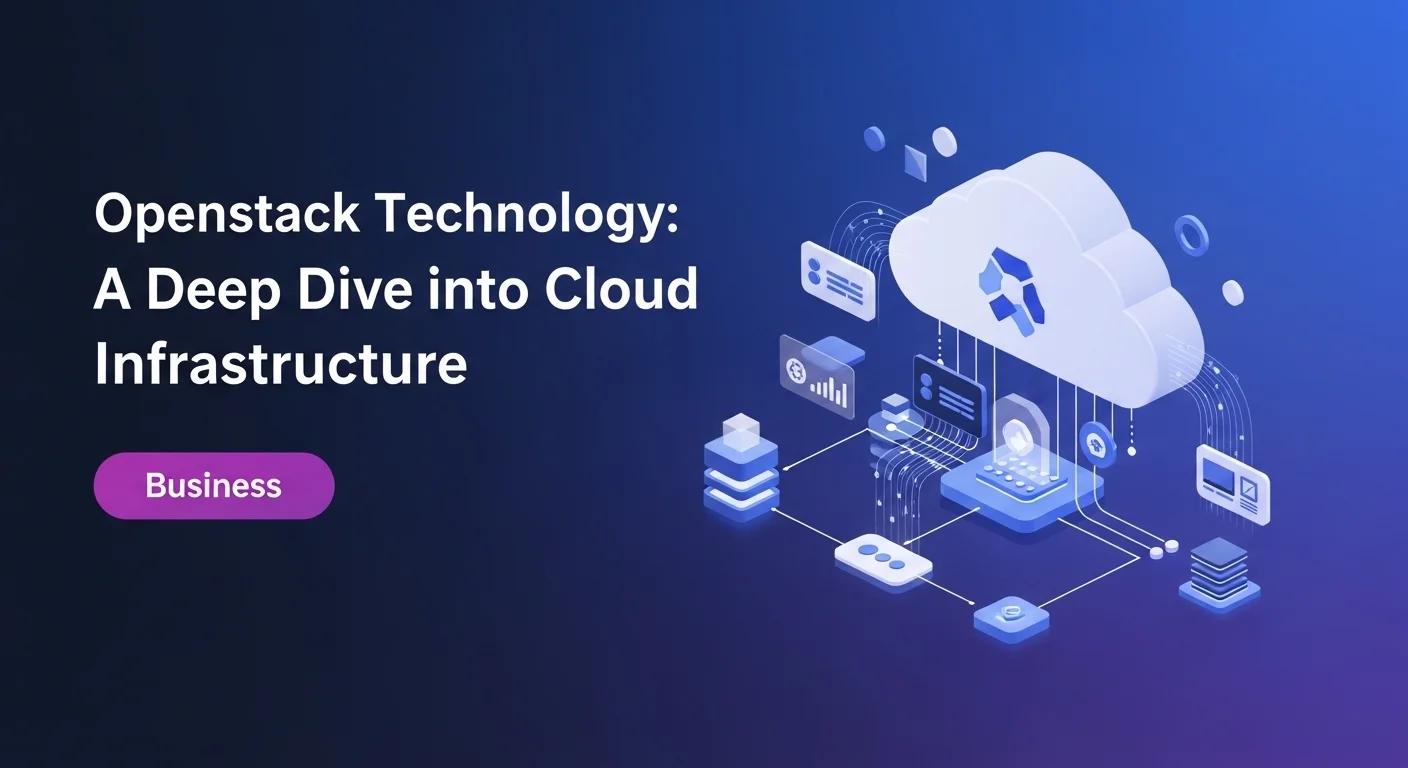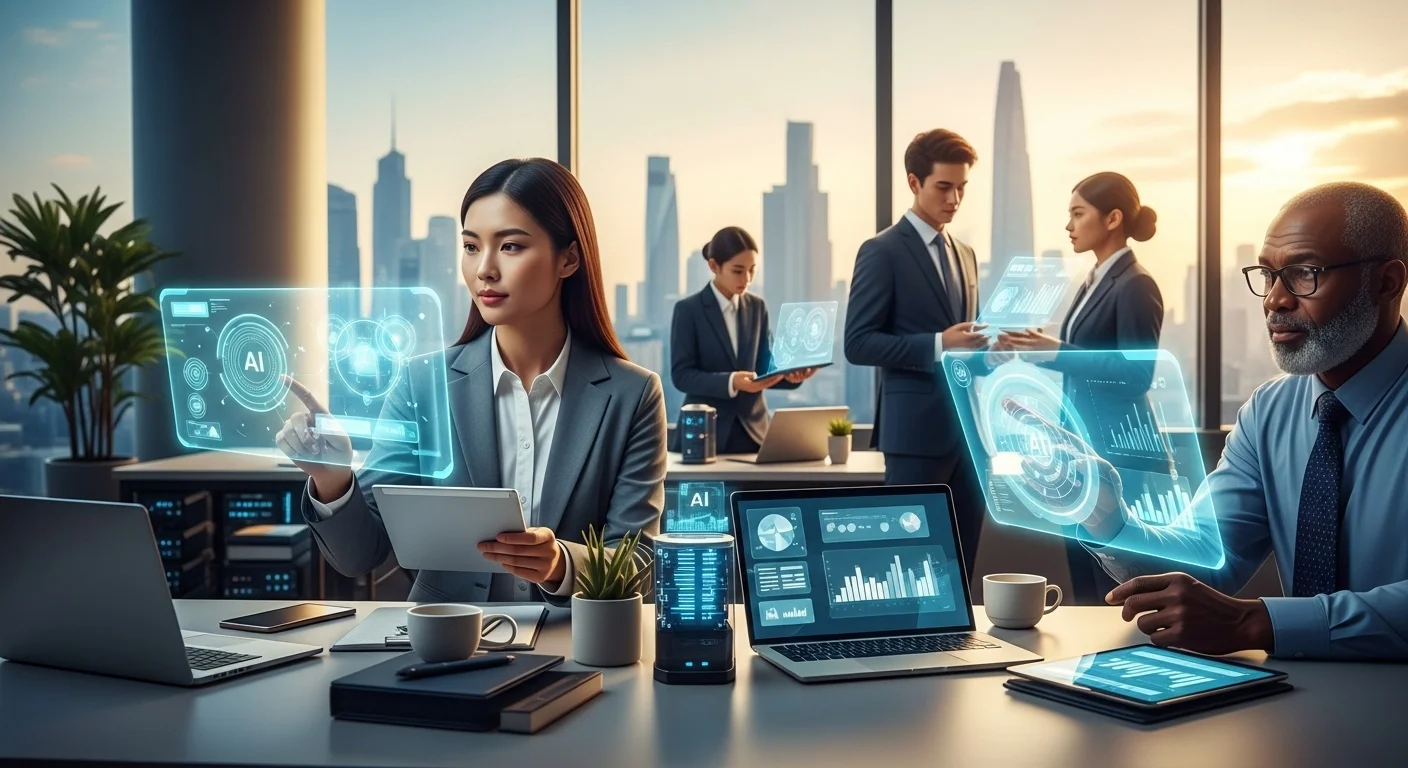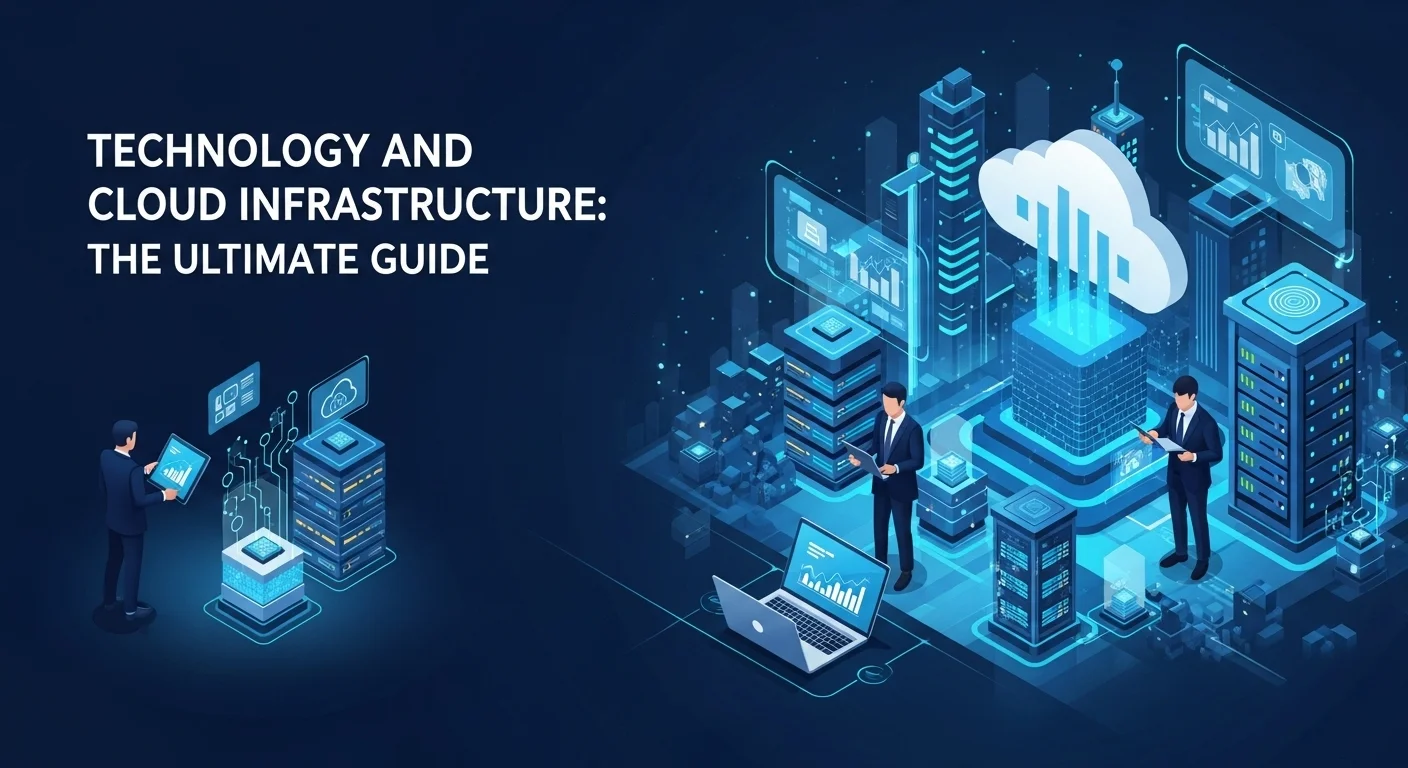Physical Security in a Digital World: Your Guide to a Unified Defense
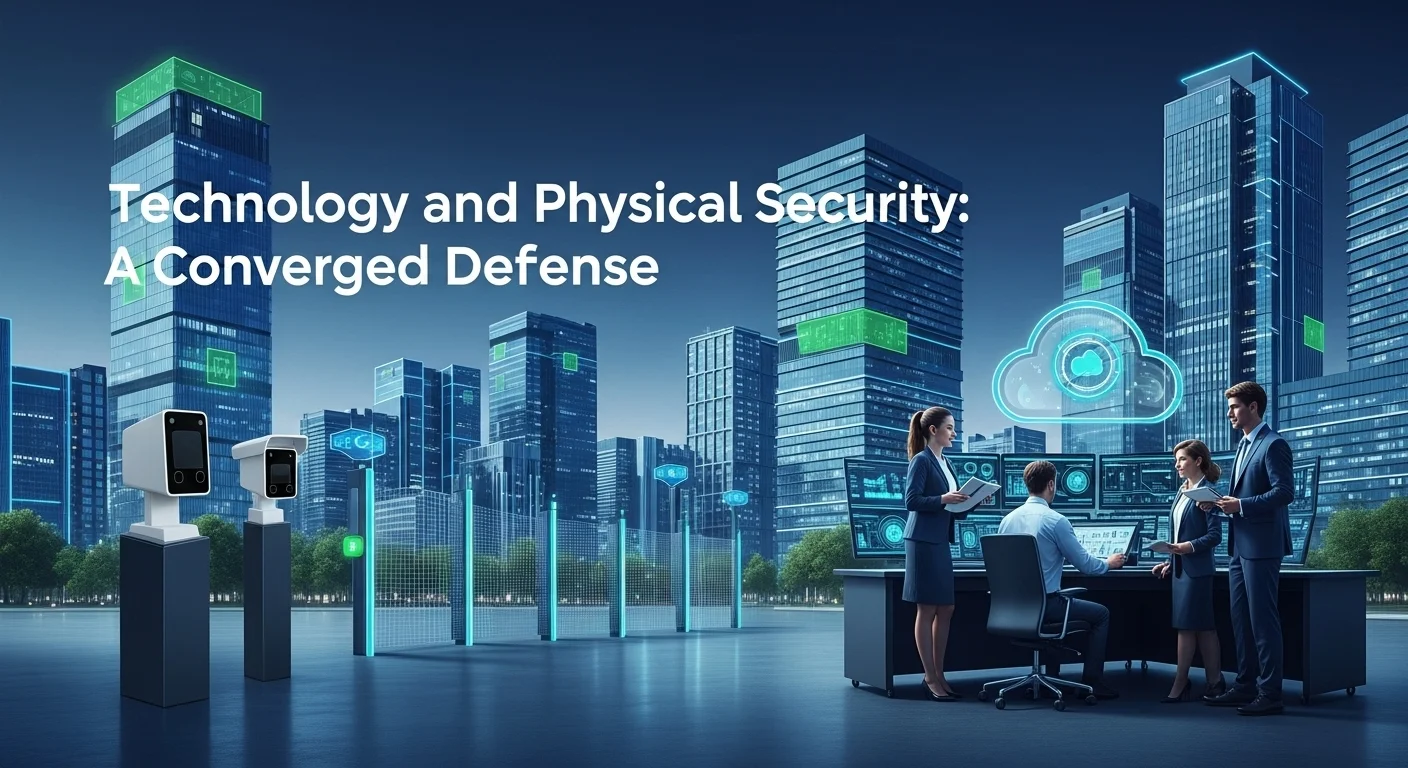
Executive Summary
I've been in the security world for a long time, and I remember when 'security' meant a heavy lock and a night watchman making his rounds. But today, a hacker can unlock your server room door from halfway across the world. The line between a physical threat and a digital one has completely vanished. This article is my deep dive into why your digital and physical security can't live in separate worlds anymore. We'll explore how protecting your buildings, data centers, and devices is the first, crucial step in protecting your data. My goal is to give you a clear roadmap for building a single, strong defense that sees the whole picture, because in today's world, a broken window can lead to a data breach just as easily as a phishing email.
Table of Contents
What We'll Cover
What Is Physical Security and Why Does It Matter Now More Than Ever?
At its heart, physical security has always been about protecting people and things from harm—strong walls, locked doors, and watchful eyes. It's the oldest form of protection we have. But the 'things' we're protecting have changed dramatically. Today, our most valuable assets are often invisible: data, intellectual property, and digital infrastructure. And all of it lives on physical hardware, in physical buildings, accessed by physical people. This is where the old world of locks and guards collides with the new world of cybersecurity.
Think of your cybersecurity strategy as a high-tech digital vault. It's reinforced with firewalls, armed with encryption, and monitored 24/7. But what good is that vault if an unauthorized person can simply walk into the building, find the server it's running on, and unplug it? All your sophisticated digital defenses become worthless. This is why the conversation about cybersecurity must begin with physical security. A weakness in your physical defenses is a direct vulnerability in your digital ones. Modern access controls like biometric scanners or smart cards aren't just for keeping people out; they are the first layer of your cybersecurity framework, preventing the kind of physical access that could lead to a digital catastrophe.
This attack surface has exploded with the rise of the Internet of Things (IoT). Every smart camera, sensor, and connected piece of machinery is a physical device that could become a digital entry point. I've seen cases where attackers gained access to a corporate network by tampering with an overlooked smart sensor in a storage closet. They didn't have to hack a firewall; they just had to physically access a poorly secured device. Securing these endpoints isn't just about software patches; it's about tamper-proof casings, secure locations, and regular physical checks. The two sides—physical and digital—are inseparable.
The threat works both ways, too. A skilled hacker can target your building's management system itself. These systems, which control doors, cameras, and alarms, are now networked computers. An attacker could remotely unlock secure doors, disable surveillance, and silence alarms to waltz right into your most sensitive areas without leaving a trace of forced entry. This is why the days of siloed teams are over. I’ve seen it happen: security teams and IT teams that barely speak to each other. That's a recipe for disaster. The security guard at the front desk needs to understand what a network breach alert could signify, and the IT admin needs to understand why that propped-open fire escape is a critical threat to their servers.
For any business, bringing these two worlds together isn't just a good idea; it's a massive advantage. It creates a 'defense-in-depth' strategy. If one layer fails, another is there to catch it. For example, a stolen keycard (a physical breach) is stopped by a required PIN or fingerprint scan (a technological control), which then triggers an immediate alert to a unified security team (a procedural response). This integrated approach is far more resilient than any single defense.
Beyond just being safer, this unified approach is more efficient. When all your security information—from door access logs to network intrusion alerts—is visible on a single platform, you can respond faster and smarter. You're not chasing down information from different systems during a crisis; you're seeing the whole story unfold in one place. This saves time, reduces confusion, and ultimately leads to better outcomes.
Ultimately, a strong, visible, and unified security program builds trust. It shows your customers, partners, and employees that you take protection seriously. In many industries, it's a non-negotiable requirement. Being able to demonstrate that you've secured your assets from every angle is a powerful statement about your reliability as a business.
We have to remember the human element. An employee is just as likely to be tricked by someone in a fake uniform asking to be let into a server room as they are by a phishing email. Security awareness has to cover both. Teaching staff that holding a secure door open for a stranger is as dangerous as clicking a suspicious link is fundamental. This shared understanding is the glue that holds a modern, converged security strategy together.
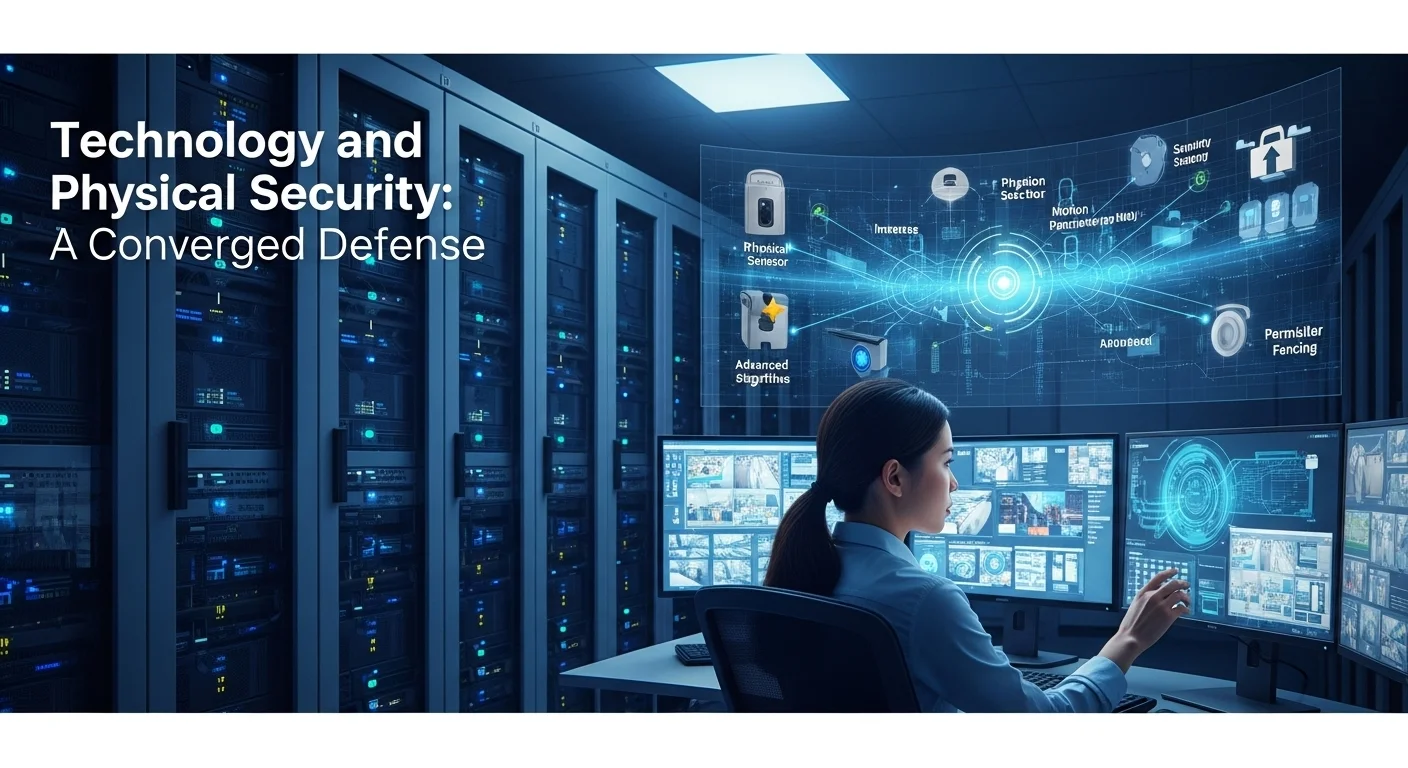
A Practical Guide to Physical Security Tech and Business Strategy
Building a modern physical security program means architecting a layered, intelligent system. It's about using the right tools and, more importantly, embedding them within a smart strategy. Let's break down the technical methods and business solutions that form the foundation of a truly unified defense.
The Tools of the Trade: Technical Methods
Today's physical security tools are less like simple gadgets and more like interconnected data points in a larger security brain.
1. Smarter Access Control: Beyond the Lock and Key
- Biometrics: This is about tying access directly to a unique human trait. Fingerprints, facial recognition, and iris scanners are the gold standard because you can't lose or steal a fingerprint. I've seen AI-powered facial recognition grant seamless, secure access to employees while instantly flagging an unrecognized individual. It’s the ultimate link between a physical person and their digital permissions.
- Smart Credentials: Modern keycards and mobile phone credentials can be encrypted and, crucially, managed remotely. If an employee leaves, you can deactivate their access in seconds from anywhere. When you pair a card with a PIN, you're creating two-factor authentication for a door, making a lost card much less of a risk.
- Mantraps & Turnstiles: These are the best defense against 'tailgating,' where someone slips in behind an authorized person. A mantrap is essentially a two-door airlock for people. The second door won't open until the first has closed and the person inside is verified. It enforces a strict one-at-a-time rule, which is absolutely critical for high-security areas like data centers.
2. Intelligent Surveillance: From Watching to Understanding
- AI Video Analytics: Modern cameras are no longer just for passive recording. They have onboard brains that can actively look for trouble. I've set up systems that automatically alert security if a person is loitering in a restricted area after hours or if a car is parked too long by a secure fence. This turns your cameras from passive eyes into smart guards that can spot problems as they happen.
- Thermal & Infrared Cameras: These tools see heat, not light. They are invaluable for perimeter security, allowing you to detect an intruder in complete darkness, fog, or smoke when a normal camera would be blind.
- Drones & Robots: For large sites, a drone can patrol a perimeter or respond to an alarm in seconds, giving your team eyes on a situation from a safe distance before they ever send a person to investigate.
3. Intrusion and Environmental Detection: The Unseen Guardians
- Networked Sensors: A web of connected sensors for motion, broken glass, or opened doors can pinpoint an intrusion attempt with incredible accuracy, feeding that data directly into your central security platform.
- Environmental Monitoring: A water leak or an overheating HVAC unit can destroy a server room just as effectively as a burglar. Sensors for temperature, humidity, and smoke are not just an IT issue; they are a core part of physical security. Protecting the environment that your technology lives in is just as important as protecting it from people.
The Blueprint: Business Solutions and Strategy
The best tech in the world is useless without a solid plan. Here’s how you build that strategic framework.
1. A Single Pane of Glass (PSIM): A Physical Security Information Management (PSIM) platform is the dream of every security director. Imagine a single screen where a forced-door alarm, the live video from the nearest camera, and a map of the area all pop up together, along with a checklist of what to do next. That's the magic of a PSIM. It connects the dots for you, turning a flood of data into actionable intelligence.
2. Security Like an Onion (Defense in Depth): This is a core concept I preach constantly. Security should have multiple layers. An attacker shouldn't be able to succeed by beating just one defense. Your layers might look like this:
- Perimeter: Fences, lighting, and cameras on the property line.
- Exterior: Reinforced doors, secure windows, and access control at the entrance.
- Interior: More access control, cameras inside, and security staff.
- The Core: The most secure layer, protecting your most critical assets like server rooms, with biometrics and dedicated monitoring.
3. Smart Design (CPTED): Crime Prevention Through Environmental Design is a fancy term for a simple idea: design your space to feel safe. Well-lit paths, clear lines of sight from windows, and landscaping that doesn't create hiding spots are all part of it. It’s a proactive and often low-cost way to make your property a less attractive target from the start.
4. Know Your Enemy (Risk Assessment): You can't protect against a threat you don't understand. Regularly sit down and ask: What are our most valuable assets? What are the worst things that could happen to them? Where are we weak? This process must include scenarios where a physical breach leads to a cyber incident, and vice versa. The answers will tell you exactly where to focus your time and money.
5. The Human Factor (Policies & Training): The best security system can be defeated by a well-meaning but untrained employee. Your program must be supported by clear, simple policies (like a 'clean desk' policy and visitor sign-in rules) and constant training. Create a culture where security is everyone's job, and you'll have an army of defenders watching your back.
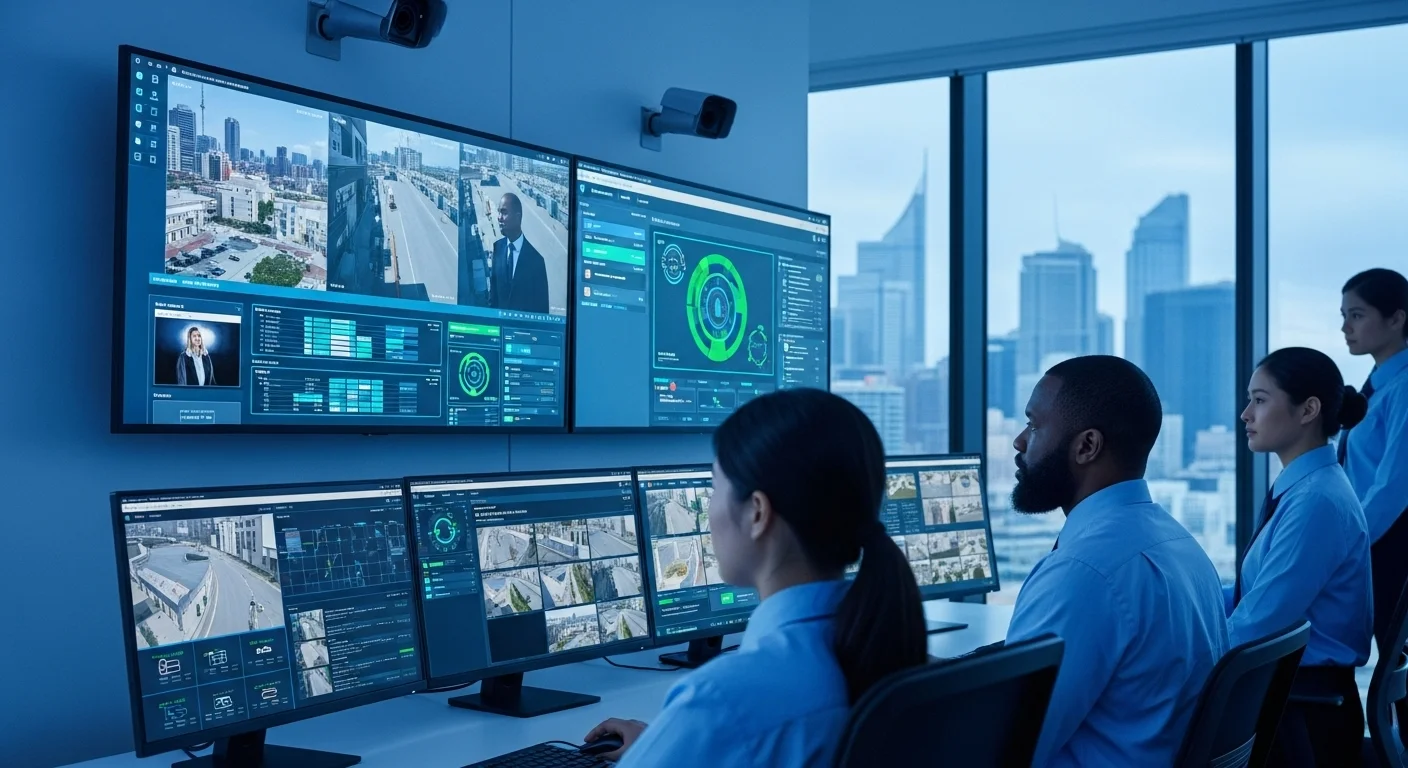
Actionable Tips to Fortify Your Defenses Today
Improving your physical security isn't just about buying new gadgets. It's about building smart habits and using technology to reinforce them. A secure physical space makes all your technology more reliable and trustworthy. Here are the practical strategies I share with every client, from startups in a shared office to large corporations with sprawling campuses.
Best Practices for Any Business
These principles are scalable and essential for creating a truly secure environment.
1. Start with a Reality Check (Risk Assessment): Before you spend a dime on a new security camera, do this first. Sit down with your team and ask the tough questions: 'What are we trying to protect, and who might try to get it?' Think about everything from a disgruntled ex-employee to a simple smash-and-grab theft. This honest look at your risks will guide every decision you make and ensure you're solving the right problems.
2. Put It in Writing (Create a Security Policy): A formal policy isn't just bureaucratic paperwork; it's the rulebook that ensures everyone is on the same page. This document should be easy to understand and cover the essentials:
- Access Rules: Who can go where, and when? How do you request, approve, and revoke access?
- Visitor Protocol: Every visitor must be signed in, given a badge, and escorted in secure areas. No exceptions.
- Clean Desk & Screen Lock Policy: Mandate that screens are locked when unattended and sensitive papers are put away at night. A simple rule like this has prevented countless data leaks.
- Asset Tracking: Know where your company laptops, phones, and other devices are, especially when they leave the building.
- Reporting Process: Create a clear, no-blame way for employees to report anything suspicious, from a broken lock to a weird email.
3. Train Your People (Then Train Them Again): I can't stress this enough: your employees are either your greatest security asset or your biggest vulnerability. Make them champions. Training needs to be regular and engaging. Use real-world examples to teach them about:
- Spotting Tailgaters: Give them the confidence and a polite script to challenge someone trying to follow them through a secure door. 'Sorry, I can't let you in, but the front desk can help you.'
- Social Engineering: Teach them to be skeptical of people trying to talk their way into secure areas or get information, whether it's in person or over the phone.
- Handling Data Securely: Remind them that sensitive documents left on a printer are a data breach waiting to happen.
A well-trained workforce that sees the connection between a secure door and a secure network is priceless.
4. Build Layers (Defense in Depth): Never rely on a single point of failure. Secure your perimeter, then your building entry, then your sensitive interior spaces. Each layer should be designed to slow an intruder down and give you more time to detect and respond to the threat.
5. Treat Your Server Room Like a Fortress: This room is the physical heart of your digital operations. It needs special treatment:
- Ironclad Access: Only a handful of authorized IT staff should have access. Use multi-factor authentication here (e.g., card + fingerprint).
- Constant Vigilance: A dedicated camera should watch this space 24/7.
- Environmental Guards: Install sensors for temperature, humidity, and water. A burst pipe can be as damaging as a hacker.
- Fire Suppression: Use a system designed for electronics that won't destroy your equipment while saving it from a fire.
- Keep it Clean: This room is for servers, not for storing old office supplies. Keep it tidy and free of flammable materials.
6. Test Your Defenses: Security isn't 'set it and forget it.' You must regularly audit your own systems. Check access logs for strange activity, test that alarms work, and consider hiring 'ethical hackers' to perform a penetration test on your physical defenses. It’s far better to have a friendly expert find your weaknesses than a real adversary.
For the Tech Enthusiast and Smart Home User
These same principles apply to your personal tech life.
- Lock Down Your Network: Your Wi-Fi router is the front door to your digital home. Use a strong, unique password and WPA3 encryption. Change the router's default admin password immediately.
- Buy Smart Devices Smartly: Before buying a new smart lock or camera, look up the manufacturer. Do they release regular security updates? A cheap, unsupported device is a huge risk.
- Use Strong Credentials: Use a different, strong password for every device and enable two-factor authentication (2FA) everywhere you can.
- Be Mindful of What's Listening: Know where your cameras and smart speakers are. Use physical shutters on cameras when you're not using them.
Looking Ahead
The convergence of physical and digital security is only getting deeper. AI will soon predict security risks before they happen, and autonomous robots will patrol our facilities. As technology races forward, our strategies to protect it must keep pace.
If you want to go deeper, I highly recommend the resources provided by the Cybersecurity and Infrastructure Security Agency (CISA). They offer fantastic, no-nonsense guidance on this exact topic for organizations of any size.
In the end, a proactive, layered, and human-centric approach to physical security does more than just stop bad things from happening. It creates a stable, trustworthy environment where technology can thrive, giving you the peace of mind to focus on innovation and growth.
Expert Reviews & Testimonials
Sarah Johnson, Business Owner ⭐⭐⭐⭐
As a business owner, this was a great overview. I'd love to see even more real-world case studies for small businesses to learn from.
Mike Chen, IT Consultant ⭐⭐⭐⭐
This is a solid guide that connects the dots between physical and cyber threats. Some of the tech concepts are dense, but the overall message is clear and important for any IT pro.
Emma Davis, Tech Expert ⭐⭐⭐⭐⭐
Fantastic and thorough article. As a security specialist, I found the breakdown of converged strategies to be spot-on and incredibly helpful. A must-read.

